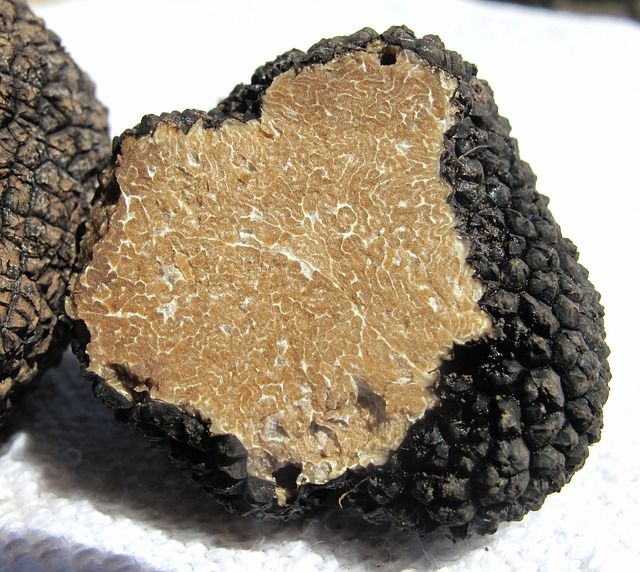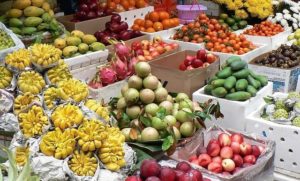The end-of-year market looks like a fairy tale. Filled with these refined and precious dishes, your basket, for a little bit, would turn into a carriage, the New Years Eve is approaching! Let us introduce you to these festive items.
Lobster, truffle, oysters, candied fruits, chestnuts: festive products for your Christmas tables
Lobster
It is the finest and most sought-after crustacean. With a combative temperament, it lives in rocky holes, not far from the coast. Breton or European, with its purplish blue, almost black shell, is by far the best compared to Canadian and American, rather brown, or to Cape Town in South Africa. Buy it alive, bright, bright, the eye, antennas and moving legs, with a bright, clear and odorless abdominal membrane. Lobster is cooked whole and tied in a short broth or grilled, cut in half lengthwise. The fresher it is caught, the better the lobster will be. Steaming lobster has the advantage of preserving all the flavours of shellfish.
Oysters
Flat or hollow, Atlantic, Channel or Mediterranean: oysters are eaten all year round and not only in “R” months! They can be kept in a cool place for a week. Once opened, they must bathe in their water and retract under the tip of a knife. Enjoy them with lemon, vinegar and shallots served with rye bread and butter. Do not eat any oysters that are dry or not moving. Oyster shells can be recycled in your garden as a beautiful source of limestone.
Truffle
This precious underground mushroom with its soft flesh and strong aroma is highly appreciated, hence its nickname of black diamond. Although there are many varieties, the Périgord black truffle, harvested from mid-November to the end of March, is by far the most famous and expensive. Prospering on the roots of trees and especially oaks, it is picked up thanks to the scent of trained animals such as dogs and pigs. The white truffle is an Italian truffle that has dramatically decreased in recent years and whose price has skyrocketed (up to 5000 euros per kilo). The amateurs find there a smell of garlic camembert. If fresh truffles are more difficult for you to find, you can find canned truffles.
Caviar
Should we still present the precious sturgeon eggs? Let’s just say that we distinguish between granular caviar and pressed caviar. The latter, cheaper, is a more salty blend of two varieties, sevruga and beluga of second quality. Because the price of caviar is in fact due to its rarity, beluga being the rarest and therefore the most expensive. Very fragile, it can be enjoyed chilled, but not iced. There are currently excellent French caviars. Farmed caviar is often contrasted with wild caviar: it should be noted that since 2006, only farmed caviar has been allowed to be marketed.
Foie gras
Should we still present this essential standard for festive meals? In terrine or pan-fried, foie gras always has its little effect. With its unique taste, it is a delight for the taste buds. For a fresh foie gras, it must weigh between 580 and 650 g, be a regular shape, have no haematomas and have a fairly soft touch. The thumb leaves its mark by giving the impression of the consistency of the clay. As for colour, it does not appear as a quality criterion, it plays little on flavour. Where does foie gras come from? Poultry (ducks or geese) are fattened by a preparation mainly made up of corn, lard, beans and salt.
Candied pineapple
You can confide the pineapple yourself, taking care to cut thick slices so that they do not break during the confiscation. Very decorative, these candied slices decorate all New Year’s Eve desserts.
Candied oranges
It is one of the easiest fruits to preserve with lemon, and even its rind can be! Both sour and sweet, candied oranges go well with desserts as well as salty dishes such as fish.
Candied pears
It is the coloured sugar syrup in which the pear macerates which gives it this pretty colour, but red wine can also be used. Candied pears go well with wild boar.
Chestnuts
Before the advent of the potato, they were the staple food of the poor. They contain potassium, vitamins B and C and phosphorus. The best ones come from the Ardèche, one of the first producing departments. A classic accompaniment to turkey or game, they are served roasted whole or mashed.
Brillat Savarin
It is the moment of sweetness at the end of the meal. It is a triple cream cheese (cow’s milk with added cream) that is soft on the palate and delicately smooth. It is a soft cheese with a flowery rind. It is named after a famous French gastronome Jean Anthelme Brillat Savarin. Its taste will be more assertive if it is allowed to mature.




